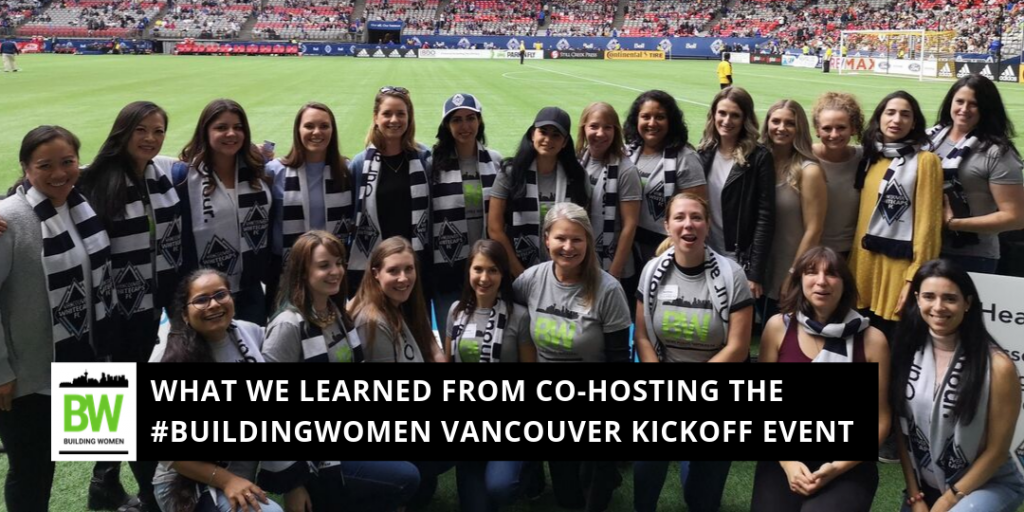
This blog post is co-written in partnership with Modu-Loc Fence Rentals Canada
We were given an opportunity to reach out to influential women and create an impact within the construction community. Within an industry that has stood the test of time, the work never ends and the culture seems to have been set in stone. In partnership with Modu-Loc Fence Rentals and Procore Technologies, we’ve created an eye-opening and invigorating event that stemmed from the idea of a sales manager at Modu-Loc.
As copartners, we were tasked to put together “an event that would bring women in construction together” – not an easy feat, for sure. After months of planning and trying to pinpoint a true purpose behind this small gathering, we came to the formation of #BuildingWomen.
Building Women was put together to “build a foundation for the next generation of women in construction.” Building Women became an outlet for topics like mentorship, working environments, and outreach programs for other women in construction.
On September 21st, Modu-Loc, Procore Technologies, and our team at Faber Connect officially co-hosted the first Building Women event in downtown Vancouver.
After a day that included a keynote presentation by Fiona Famulak, President of the Vancouver Regional Construction Association (VRCA), a roundtable discussion, and some additional networking at an afternoon Vancouver Whitecaps FC game, we’d learned a ton about the effect that women and other underrepresented groups can have on the industry.
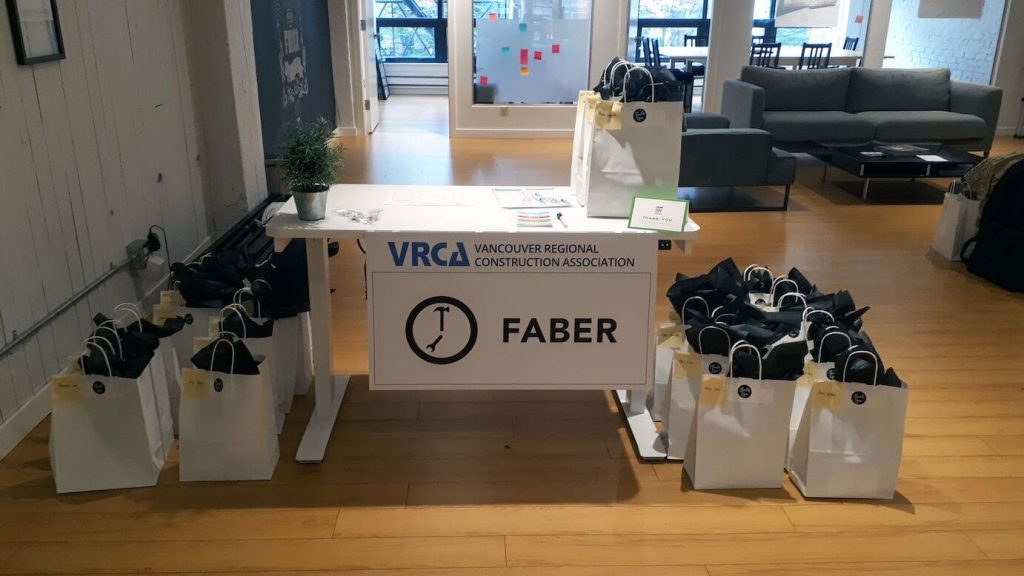
What we discovered about the current state of the construction industry
As our keynote speaker for the day, Fiona Famulak gave us a rundown of what the construction industry looks like in British Columbia and Canada from a numbers perspective. The construction industry generates $21.1 billion of B.C.’s gross domestic product (GDP). Currently, there are a total of $144 billion worth of projects in B.C. actively underway. There is still a whopping $206 billion worth of construction projects that are proposed to start.
How many of these projects are we completing annually? Only $16 billion worth.
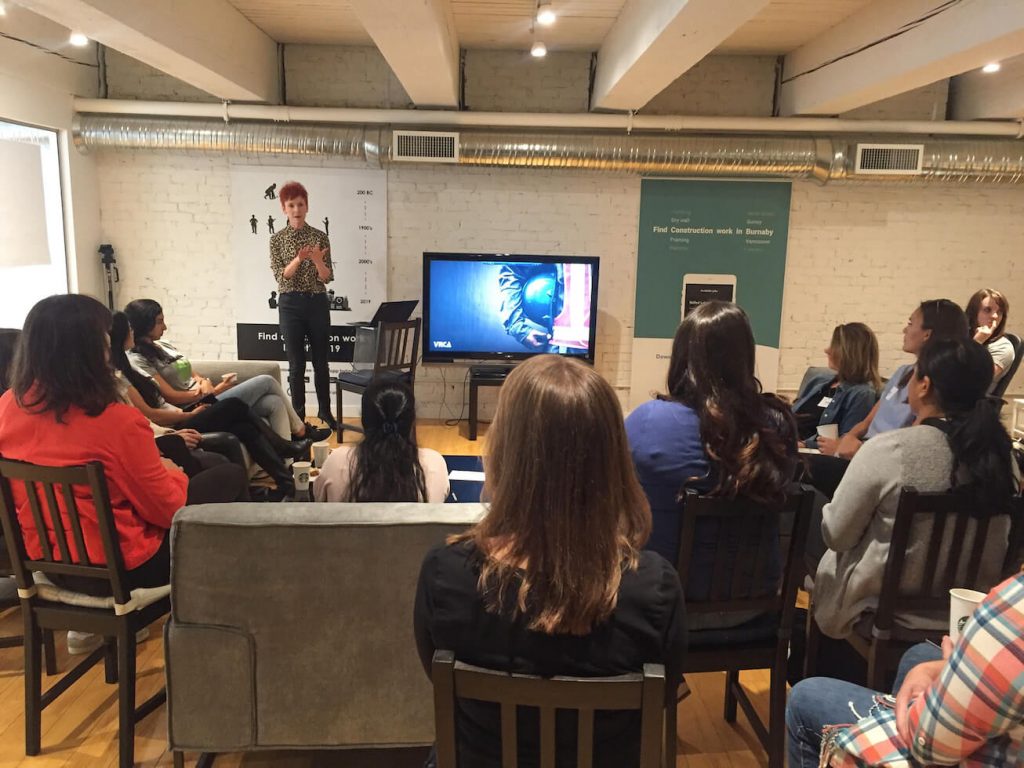
The current challenges we discussed
With the population of the Lower Mainland projected to increase by 1 million by 2041, we have ample potential to work faster, be more productive, and become a greener city and province than ever before. Of course, these newcomers will also need housing – something that is already in short supply in the Greater Vancouver Area – representing great economic opportunity for home builders and developers.
With that being said, the industry faces challenges that are not exclusive to our province. First and foremost, we are in the midst of a serious skilled labour shortage. Here’s a rundown of what the trend in skilled labour supply looks like, with data courtesy of the VRCA and BuildForce Canada:
| Lower Mainland 2019 – 2021 | British Columbia 2019 – 2028 | Canada 2019 – 2028 | |
| Total recruitment needed | 19,000 | 66,200 | 304,200 |
| Minus: Newcomers under 30 that enter industry | 6,900 | 36,500 | 221,300 |
| Skilled labour shortage | 12,100 | 25,700 | 82,900 |
Source: BuildForce Canada
The numbers show why we are completing only $16 billion worth of projects per year. To be a nation with environmentally-conscious cities, more productive people, and a flourishing population, we need to find a way to staff these projects. During the Building Women event, we heard about two very real opportunities to address the labour shortages:
- Underrepresented groups and minorities could help alleviate labour shortages
- Women represent a very small portion of the skilled labour workforce
Unfortunately, these potential solutions face a challenge, which was raised during our roundtable discussion: the treatment of women and minorities in the industry. Issues like bullying, hazing, and harassment still exist in some construction workplaces, making it more difficult to turn to these groups to help fill labour gaps. Finding a way to overcome these challenges is essential to making work environments in our industry feel more inclusive.
Female representation in B.C.’s construction sector
A total of 242,500 people work in B.C.’s construction sector, which includes construction trades and office roles. In our discussions, there was some light shed on the state of female participation in this number – out of the entire workforce, only 12% are female. There are only 29,100 women that work in the construction industry within the province.
Let’s get down to the real numbers by taking an even more granular look at the workforce composition. We have a total of 180,300 construction trades workers in B.C., with only 4.7% of all construction trades workers identifying as female.
This means we have only 8,474 women in the construction trades workforce.
To us, this number means that we have a lot of work to do when it comes to achieving equality, greater diversity, and fair work environments.
Women, along with other underrepresented groups, can feel siloed and underappreciated simply because of the sheer lack of numbers. Add to that the challenges of workplace harassment, bullying, and other negative experiences on the job, and it’s easy to understand why some women opt out of working in construction altogether.
What we can gain with a more diverse workforce
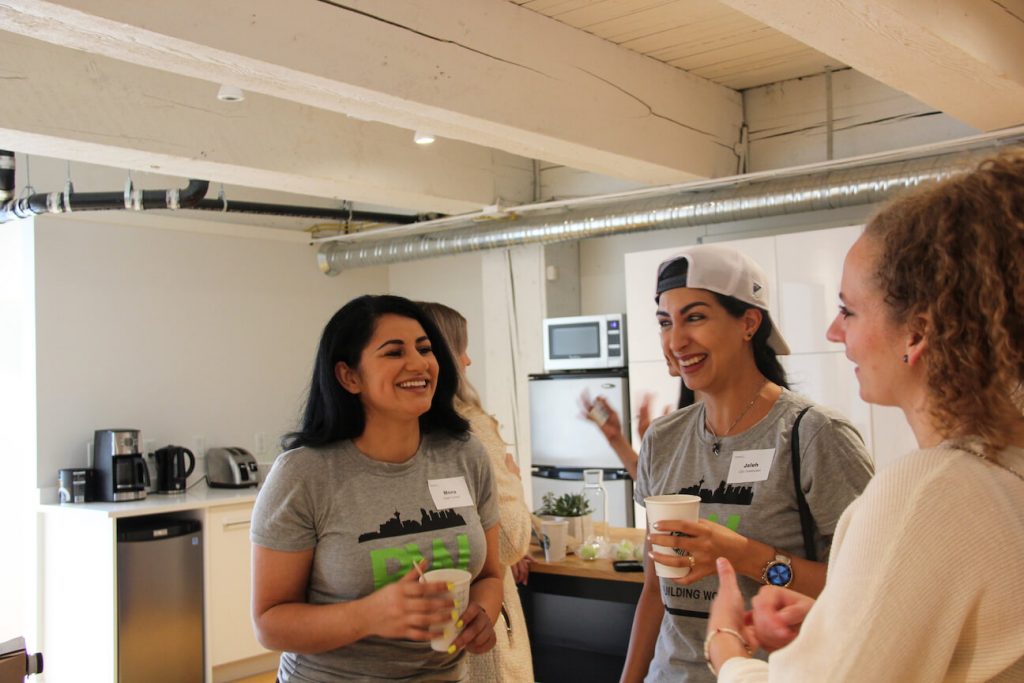
It’s unfortunate that some girls will never even consider a career in construction, given all we stand to gain from having women participate in the workforce. At the Building Women Kickoff Event, we talked about all of the ways a more diverse workforce could benefit the construction industry. The Building Women group collectively settled on two main advantages of having a construction workforce that includes women and other underrepresented groups:
- More creativity in the workplace
- Larger demographic pool to fill labour gaps
Increasing creativity and having multiple points of view
All of the participants of the Building Women Kickoff Event come from different walks of life. Some had entered the industry straight out of school, while others didn’t find themselves in a construction environment until later in life. Some were born and raised in British Columbia, while others had immigrated from other countries.
We’ve all seen and experienced different things, providing us with a unique perspective and the ability to come up with our own solutions to common problems. Creativity stems from fresh thinking and new ideas, and can greatly benefit an industry like construction – an industry still predominantly run by men.
With a more diverse workforce comes a potential (and positive) shift in company culture. People can become more open-minded, accepting, and creative at solving problems when working alongside minorities and women. They learn to contemplate multiple points of view and try different approaches that they previously might not have considered. They begin to challenge the status quo and think outside the box.
Women and other underrepresented groups can bring new skills and approaches to the table, and inject a much-needed breath of fresh air to the skilled trades workforce.
More underrepresented people seeking a career in construction
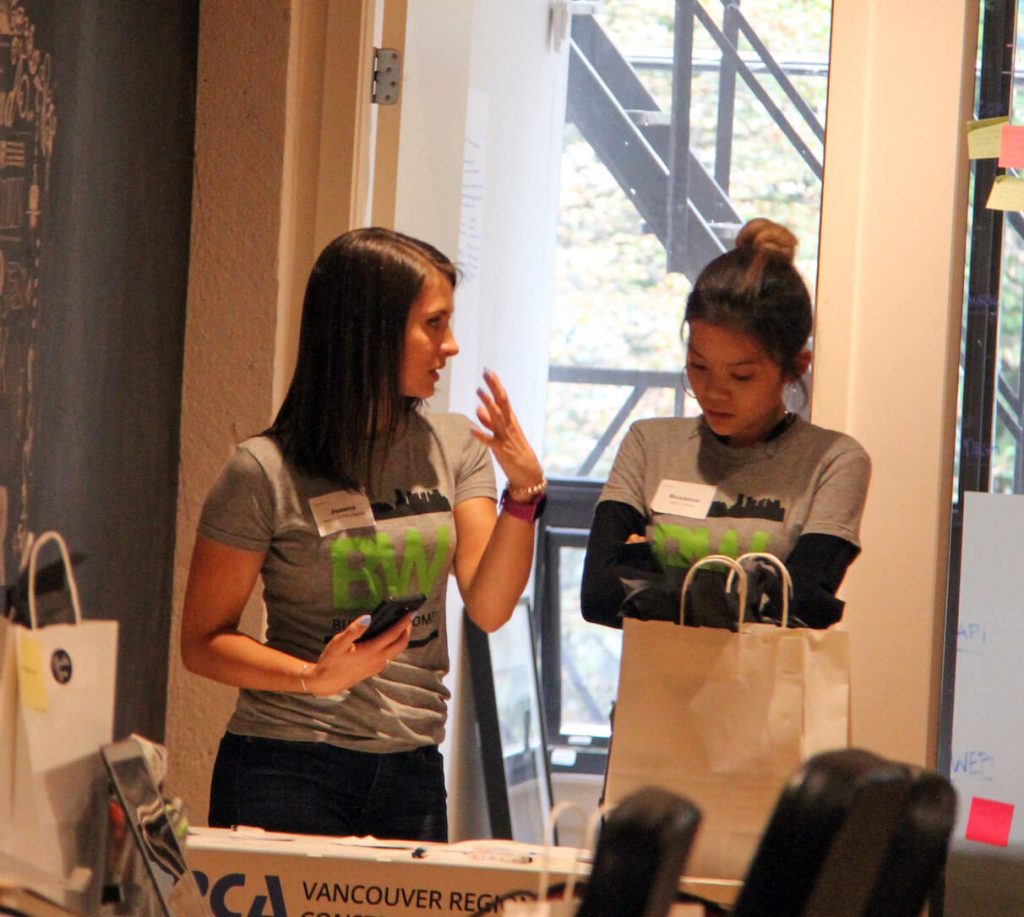
With a workforce that includes underrepresented groups comes more opportunities to attract talent. Unfortunately, hiring bias still exists across our industry and many others – and it isn’t always as malicious as you might think. Without realizing it, many of us have a tendency to surround ourselves with like people, and that goes for the candidates we hire. It’s a tough cycle to break without some level of awareness.
By making a concerted effort to increase the participation of underrepresented demographics in construction, not only will we have a larger pool of potential candidates, we’ll also break the cycle that is partly responsible for deterring those groups from entering the industry. We’ll see more individuals at Management levels that have a vested interest in improving diversity and nurturing the construction careers of minority employees. Having those role models in place will also make a job within the industry feel more attainable to newcomers.
We discussed how making a career in construction attainable to all people requires us to break down barriers that have been set by the industry. Creating a more accepting workplace can result in more people being interested in a career in construction, and would likely lead to higher employee retention rates. Speaking from personal experience, when a work environment is more diverse there is just something in the air that increases employee morale.
Opening up the gates to hiring and recruiting underrepresented groups like women can also increase the productivity of our province and our nation. As the data shows, women are particularly underrepresented.
There is a great opportunity to help women build up their career in the construction industry – but first, there are some challenges we need to address.
The barriers we face before progressing the industry
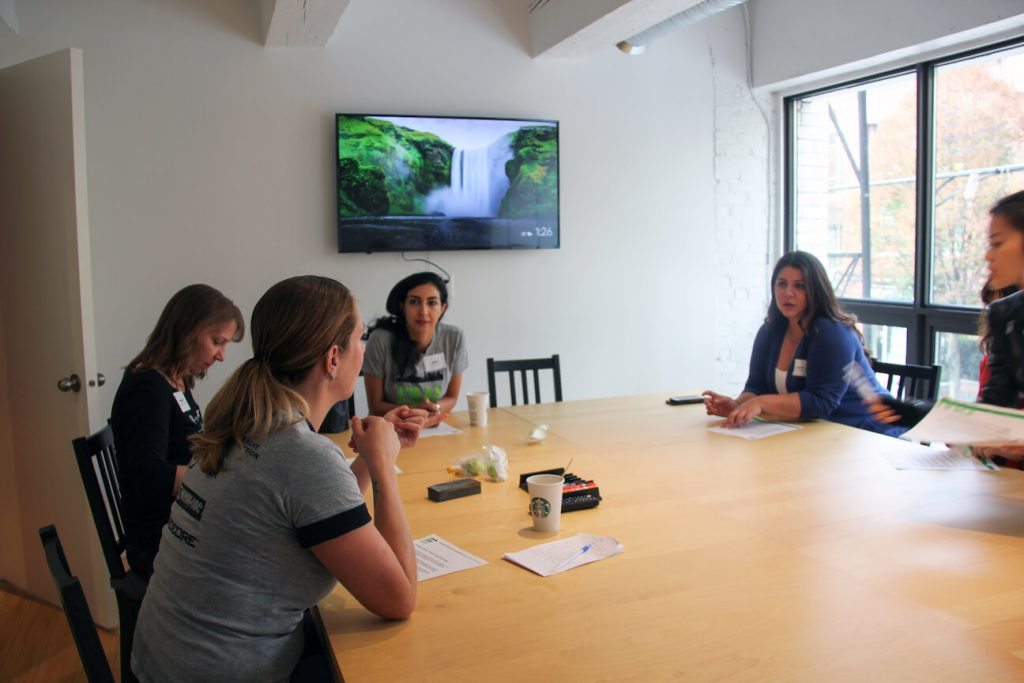
During the Building Women roundtable discussions, we discussed the idea that the industry is perceived as not being very female-friendly. That perception stems from concerns around how women would be treated in the workplace and on job sites. As stated earlier, issues like bullying and harassment still haunt our industry. As a group, we talked about what else could potentially turn women (and other minority groups) away from a career in construction.
Our participants mentioned that one of the deterrents to women looking to enter construction is the idea that there isn’t much of a sisterhood within the industry. Men, who are well represented in the workforce, can easily find peers that they get along with and create brotherhoods almost naturally. When women come into the industry, a sisterhood can be pretty hard to establish. It’s not uncommon for a female worker to be the only woman in the room or on the job site. In addition to low female representation, the lack of female role models is also a factor. Often, there is no female superior for a rookie to look up to or seek wisdom from.
Another comment from the roundtable was that men often start their careers in construction at a much earlier stage. One explanation was that some enter into a family business, with fathers often passing the baton to their male offspring and slowly easing them into the family business from a young age. Historically, not many fathers would push their daughters to have a career in construction.

When women do get into the construction industry, it can be pretty intimidating. Competing with men who have had an early start can be discouraging. Sometimes these men are not receptive to a woman’s input in the workplace. We discussed how women who do try their best to accelerate their career can actually intimidate some men to the point where these stronger-willed women are avoided or excluded.
We also heard how women would generally need to work harder to prove themselves and show others that they do know what they are doing. With that being said, women can also sometimes be responsible for creating barriers to their own success. Our roundtable discussions had women chiming in that they have a responsibility in changing the industry’s attitudes, too.
Part of this meant taking care to be confident, unapologetic, and hold others to a higher standard. Though this is easier done in an organization that has the proper expectations and policies in place, our participants agreed that they had an important role to play in advancing diversity within the industry. Even promoting and celebrating other women in the workplace was brought up. For example, ETRO Construction organizes social events that are catered to helping women build the support network they need.
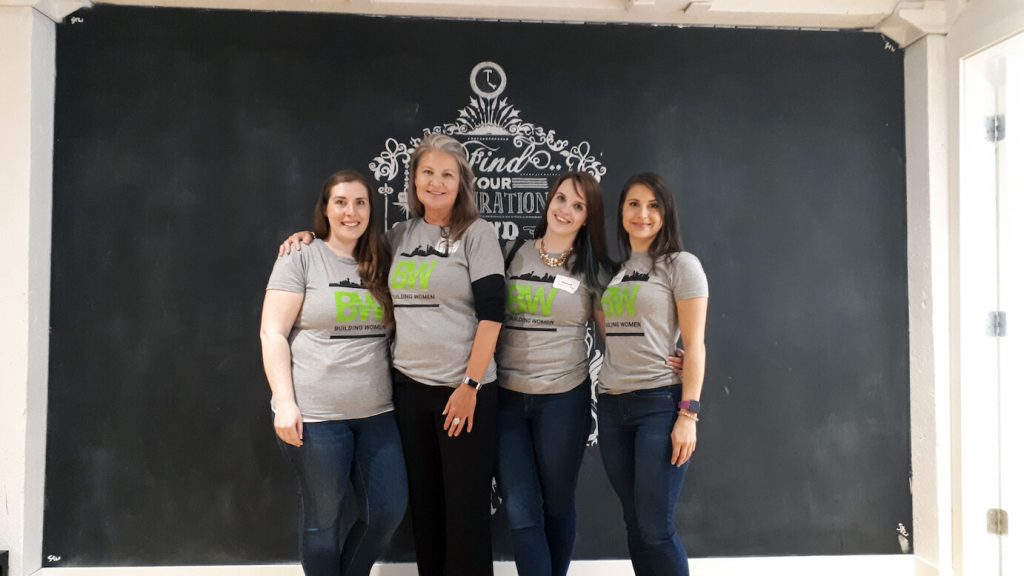
Solutions and programs that can help break down barriers
Some solutions were shared at the Building Women Kickoff Event to help participants increase support for women and minority groups. One was the Builders Code, which is an initiative of the Construction Workforce Equity Project. This initiative was actually one of the main topics of discussion for the day. The Builders Code provides resources to organizations looking to attract and improve retention of underrepresented groups. These include a virtual HR team, culture training, and a campaign that celebrates construction employers who’ve built fair and diverse workplaces.
With resources provided by the Builders Code and support from leadership, women can help promote and implement a safe and inclusive workplace within their own organizations. Partners like the Vancouver Regional Construction Association and the Ministry of Advanced Education show the strength and expertise behind the Builders Code.

Much like the Building Women Kickoff Event, there are other initiatives that help band together women and minorities within the construction industry. Groups like Canadian Construction Women (CCW) and Canadian Association of Women in Construction (CAWIC) are available to women who want to connect with other female workers in the construction industry. Many regional construction associations also offer a Women in Construction committee or subgroup to help women build those important networks.
CCW operates primarily in the Lower Mainland of British Columbia, while CAWIC mainly provides support within the province of Ontario. Regardless of where you are located, a great way to feel connected in the industry is simply to network. Networking groups are commonly regarded as a great channel for women to get involved and build connections within the community.
Even something as simple as reaching out and speaking with other women in the office or on the job site can be enough to help you feel connected. This is a great first step before trying to introduce the Builders Code or delving into a networking group.
Despite all the barriers that still exist and the work that is yet to be done, we collectively agreed that there has been a significant progression in the industry. This excerpt from an article written by Dara Wone, Brand + Culture Builder at ETRO Construction (and one of our Building Women attendees), perfectly summarizes the state of things:
“We’ve seen incredible progress in the last 10 years; we can’t ignore all the work that’s already been done by trailblazers in the industry that have been standing for equity and equality for years before now. And, we know there’s so much more work to do to follow in their footsteps and take the work they started to the next level, creating industry-wide change.”
Dara Wone, ETRO Construction
It just goes to show that despite all the challenges that lay ahead, our industry is quickly making progress towards being more inclusive and accepting. Simply having these conversations allows us to shed more light on the issues faced by women and minorities working in construction, and we are grateful to all of our Building Women participants for bringing more awareness to the subject of diversity.
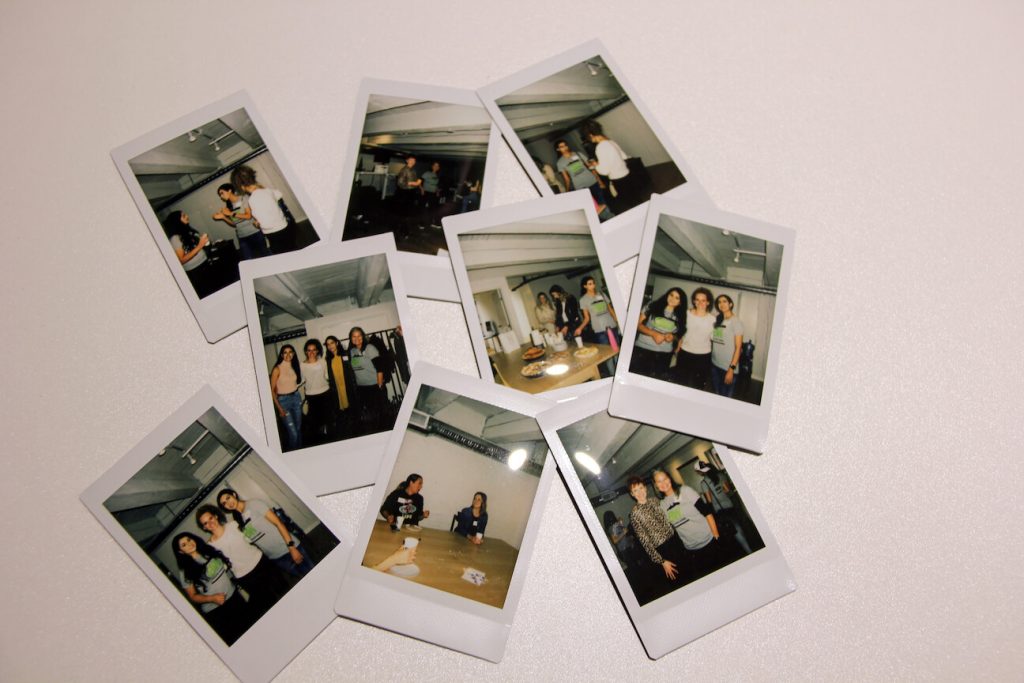
To all participants of #BuildingWomen:
Thank you for helping to build a foundation for the next generation of women in construction.
#BetterTogether #BuildingWomen

Editor’s Note: This article was co-authored by Joanna Bieda. Joanna Bieda is the Marketing Manager at Modu-Loc Fence






